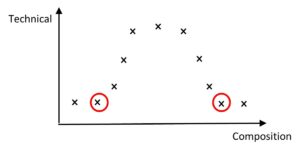
How to protect a technical effect with a patent – the endless possibilities of selection inventions
Innovation in materials science often creates high levels of interest from the scientific community as well as the commercial world. The discovery that an existing material can withstand corrosion, has an antimicrobial effect, is biodegradable, or any previously unknown technical effect can, in certain circumstances, have the power to revolutionise industry or society. It is therefore logical to want to protect materials science innovations with Intellectual Property protection, namely patent protection. However, when it comes to new discoveries in materials science, patentability is not straightforward.
Materials and patent law: discovery or invention?
Patent law states that discoveries are not patentable as such since they are not defined as inventions. The European Patent Office (EPO) states: ‘If a new property of a known material or article is found, that is mere discovery and unpatentable because discovery as such has no technical effect and is therefore not an invention within the meaning of Art 52(1) EPC’ in the Guidelines for Examination, Part G-II, 3.1. Similar texts can be found in other jurisdictions. For instance in the US it is not possible to have a patent issued for the discovery of a previously unknown phenomenon in nature, for an idea to be patentable it must have taken physical form.
So how should a researcher go about to protect a new discovery of a new property of a known material? They turn to selection inventions.
Explaining selection inventions
Selection inventions deal with sub-sets, or sub-ranges, within a larger known set or range. To discover a new property of a known material, the known material is referred to as the known set or range, with the type or composition that has the new discovered effect being the sub-set or sub-range. For example, calcium phosphate is a well-known class of materials comprising calcium, phosphate, and possible water and/or hydroxide. For the sake of this example let us assume that a researcher discovers that a certain type of calcium phosphate, e.g. anhydrous monocalcium phosphate, has an antimicrobial effect. We can now classify the calcium phosphate as the known set, and anhydrous monocalcium phosphate as the sub-set. If the technical effect, i.e. the antimicrobial property is only present for a sub-set of calcium phosphates, it is possible to have a patent issued for that sub-set. In this case theoretically it would be possible to obtain a patent for anhydrous monocalcium phosphate, but unfortunately it does not stop here for the researcher. If the researcher has discovered the antimicrobial effect by analysing one composition or one sample – which is often the case since that is enough for a scientific article – they can obtain patent protection for that specific composition. However, if a competitor slightly changes the composition – say, by adding a second calcium so that it is no longer monocalcium phosphate, but instead dicalcium phosphate, they are outside the scope that the patent protects and can therefore not be prevented.
Creating selection invention patent
To stop this happening, the innovator needs to obtain wider patent protection by exploring the technical effect fully. Prior to submitting a patent application, the researcher should identify where the composition starts and stops, presenting the technical effect by varying the composition. This is because selection inventions are based on explementary data. Ideally this data, showing the full scope of protection, should be included in the first filing.
Defining a useful scope of protection
To help explain how a technical effect is measured, please look at the graph – Figure 1. – below setting out a fictitious recommended data set to include in a patent application for a selection invention. This shows an illustrative set of data points where the composition has been varied and the technical effect measured for each type of composition. This enables the identification of the endpoints, marked with red circles, when the technical effect is no longer present. By including data points corresponding to the ones in the graph it is possible for the researcher to obtain protection for all compositions, the entire sub-range, in between the end points.

Figure 1. Illustrative data set for a selection invention.
In this example all the data points in the graph are included in the priority filing. Therefore the inventor would be able to obtain protection for the entire composition range showing the technical effect, i.e. the antimicrobial effect, and thus efficiently prevent competitors from using their discovery.
Scientific data is key
Selection invention is a powerful patent tool that can be used for all types of materials that are already known but show a new, previously undiscovered technical effect. However, the importance of scientific data must be emphasised. If data to support the full scope of protection is not included in the first filing, there is a significant risk that the inventor will end up with no protection at all. Additionally, in principle it is not possible to add data later, especially not data to show the endpoints – this must be included in the first filing. The key to a successful selection invention protection is therefore experimental design planning and execution to obtain the necessary data points.
If you would like to know more about selection inventions and how you best can use them to protect your business, please contact the author or your usual Barker Brettell attorney.


